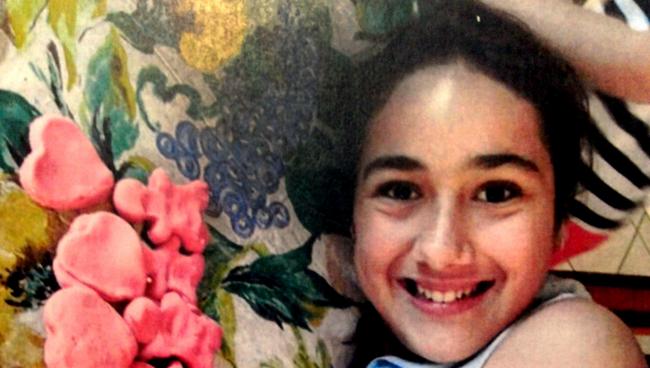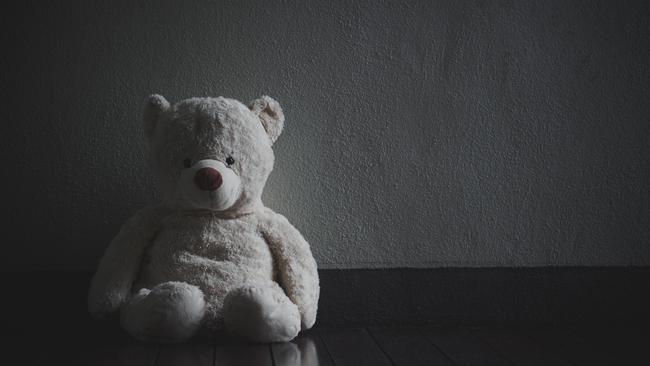IT takes a disturbing amount of evil to kill a child, to snuff out innocence.
In turn it takes a special kind of good to investigate, track down and put away that evil.
Over the last 10 years detectives working out of the southeast district have investigated or are currently investigating, seven child homicides.
On top of that there have been 13 cases of grievous bodily harm against children under the age of 10. And police say if it wasn’t for the grace of God and medical advances, those incidents could well have been homicides too.
Regional Crime Coordinator Kerry Johnson said he makes no apologies for prioritising child murder investigations.
“Our victims of these homicides range from babies that are a day old and the eldest child I have in that time is a 16-year-old child who was killed,” Supt Johnson said.
“Any death is horrific, but a child’s death, taking the life of an innocent child, that is something else.
“It’s impossible to prevent everything, that would be a perfect world. Rest assured that what does go through the system when it’s investigated, it is all stops out, it’s given absolute priority and I make no apologies about that.”
TRUCE CRIME AUSTRALIA: THE MEN AND WOMEN WHO CHASE MONSTERS

Supt Johnson explains how easily a baby shaking incident, an assault or neglect could have been another homicide statistic.
“I use this traffic analogy, there’s a lot of serious traffic accidents that could be fatal, the only reason they’re not is modern medical intervention,” he said.
“There is all these medical systems in place and a fantastic response that’s able to be given by health professionals that prevented that crash from being a fatal.
“The same thing happens in our world with grievous bodily harms. I can tell you right now, there are children who are sadly on life support, but the only reason they’re still with us is the level of medical care and intervention that has taken place.
“10 of those 13 grievous bodily harms are what we would call shaken babies, when you’re talking babies and the trauma that is caused with something like that, it is not even a knife edge between life and death. It’s medical intervention that are the heroes with that.
“When we talk 13 grievous bodily harm cases, a lot of those are on a knife edge that could have ended up in the statistic of murders.”
RICK THORBURN GAVE SON A COVER UP STORY FOR TIAHLEIGH’S KILLING

The little lives destroyed in these vicious attacks are difficult to investigate. The young victims are unable to speak up for themselves follow brutal assaults.
“The hardest thing with this is, we are talking about little, little kids, day old, month old, year old children,” Supt Johnson said. “As investigators, we’ve got extremely gifted people, but there is a certain point where we can’t get a version of what has happened from a child, because they are too young, they can’t speak.
“If you find historical injuries on children, we can’t go back and say what happened to you when you were a month old, even though they might be five now, it’s impossible. That sounds common sense, but I don’t think people understand that sometimes.
“These children can’t speak, some of these kids who are victims of grievous bodily harm might never speak. If they’ve been killed, they’re silenced forever.”
But it’s not just the homicide’s detectives have to look into. Every single child death is reportable to the coroner, which means police have also investigated another 83 child deaths which they deemed non suspicious during the last 10 years. These deaths included drownings, sudden infant death syndrome and choking accidents.
TYRELL COBB COULD HAVE BEEN SAVED, EXPERT TELLS COURT

“Under the Coroners Act, any child that dies is a reportable death, what people don’t understand about that is it could be nonsuspicious circumstances, but the fact that it is a child death, it’s reportable,” Supt Johnson said.
“In those 83 deaths you’re talking about those sudden deaths of children that are unexplained, pool drownings, accidental deaths and in those we have to look at whether there is negligence from the parents.”
Supt Johnson said when investigators walk into these crime scenes, they have to have an open mind.
“The majority of crime like this, sadly, will be committed at the hands of a person that is known to them, you can’t hide that. Does it mean the Daniel Morcombe style of thing never happens? Well of course it does, it happened to Daniel Morcombe.
“He wasn’t known to his attacker.
“So you can’t walk into it as an investigator and go ‘it’s going to be a family member’, you can’t also go ‘it will be some stranger who snatches a child’.
“You have got to have the balance between, one, being an investigator and being tenacious, and two, having empathy for the grieving family and relatives, but also a grieving community.
“I have to remind myself that quite often when you see these child deaths and child grievous bodily harm, the broader community are really quite affected by that and it does hit people hard.”
GET A NEW SET OF HEADPHONES WITH YOUR DIGITAL SUBSCRIPTION

The investigation that follows can be time-consuming and exhaustive, often taking two years before an alleged offender will front a court.
“People often ask, a child was harmed or died two years ago, why are we only making arrests now,” Supt Johnson said. “We have to treat everything in a certain way, a thorough investigation right from the beginning, because if in 12 to 18 months time we find out that it wasn’t an accident, there’s foul play, we can’t go back in history and recreate an investigation.
“As much as it’s hard on families and other people as well, we have to be thorough and do an A grade job, because we don’t have the luxury to go back in time and do it again.
“When we collect our evidence for a deceased or seriously injured child, it has to be forensically examined.
“Some of these jobs take two, to two and a half years before they go to court. Sometimes with the nature of injuries, there are a lot of people who have access to a child, whether it’s daycare, medical, school, neighbours, uncles, aunties, whatever.
“We have to go through every one of those persons and that’s where the thoroughness of the investigation takes place.”
He said police officers become detectives because they have a calling to this type of work.
“You are in this game as an investigator for those bigger investigations, that’s what our calling is,” he said.
“To sit there and methodically pull those matters apart and either prover or disprove something or bring about a conclusion.”

Supt Johnson said investigations into crimes against children take a toll, but they wrap support around them to ensure they are emotionally handling the often graphic nature of these cases.
“Major investigations, across the board, hats off to our people and the public should be very proud of our guys. I don’t know if that gets across enough,” he said.
“In particular in this area and the toll that it can take on people, they’re exceptional human beings, to back up and put the work in.
“Nobody is bulletproof. We have systems in place where we have our people go through an assessment to make sure they are still able to cope with the work they are doing. You don’t get into this field unless you are found suitable to be able to deal with these situations.
“We put as much support in as we can behind our people.
“There is a lot of human cost with child deaths and grievous bodily harm.”

